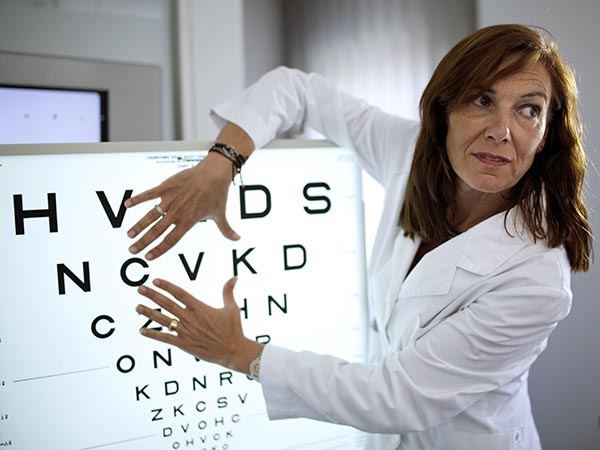What is low vision?
The latest advances in ophthalmology and the frequency of preventive eye examinations allow many eye conditions not to result in total vision loss.
However, some diseases cause a loss of vision that cannot be restored through surgery, other pharmacological treatments or even with conventional glasses. This vision, which may still be useful but insufficient, is called low vision.
The most common symptoms are the loss of detailed vision of objects, the reduction of the visual field (side vision, stairs…), or both symptoms at the same time.
The most common diseases that cause low vision are age-related macular degeneration (AMD), retinitis pigmentosa, cataract, diabetic retinopathy (DR) and glaucoma.
What symptoms does low vision present?
- Loss of central vision. The patient notices a loss of vision that prevents them from reading, watching television, or recognizing people’s faces, but does not prevent mobility. This occurs in people suffering from age-related macular degeneration (AMD).
- Loss of visual field. The patient has a limitation of peripheral vision (lateral, superior, inferior or tubular). They have mobility problems because they do not see obstacles or stairs, for example. This is a classic symptom of glaucoma or retinitis pigmentosa.
- Glare, loss of contrast and confusion of colors.
- Image distortion.
- Blurred vision.
The team specialized in low vision carries out a study to evaluate each patient’s vision. Based on this study, visual acuity, contrast sensitivity, visual field and color vision are determined.
When should we see a low vision specialist?
When the ophthalmologist has diagnosed us with an eye disease (AMD, glaucoma, inoperable cataract…) that prevents us from performing daily tasks either at near or far distances, and that cannot be improved with conventional optical solutions (glasses, contact lenses…). Many times, it is the ophthalmologist who recommends this type of visual rehabilitation.
What is a visual rehabilitation program?
The goal of visual rehabilitation is to provide people with visual impairment strategies that allow them to continue performing daily activities in work, educational, cultural and leisure environments, thus promoting social integration and personal autonomy.
A visual rehabilitation program consists of a set of visual exercises aimed at teaching the effective use of aids and improving visual skills.
These tools make it possible to take advantage of the remaining vision to improve daily life skills and, therefore, help to increase our quality of life.
Different skills must be trained so that the patient masters the aid: localization, focusing, detection, scanning and tracking. The aspects most emphasized are scanning and tracking or following.
A good training program provides the foundation for subsequent use of residual vision, with optical aids, to be satisfactory and not abandoned at the first difficulty.
Training should be based on the specific needs raised by each person and not only on those expressed by the family or assumed by the optometrist; therefore, training must be individualized.
The objectives of specific low vision training must be set taking into account each patient’s characteristics: age, cause and degree of disability, intelligence, motivation, and profession.
The starting point of training or rehabilitation is that the patient understands the potential of their remaining vision and the functional implications of their condition, and knows how to optimize its use with optical aids.


